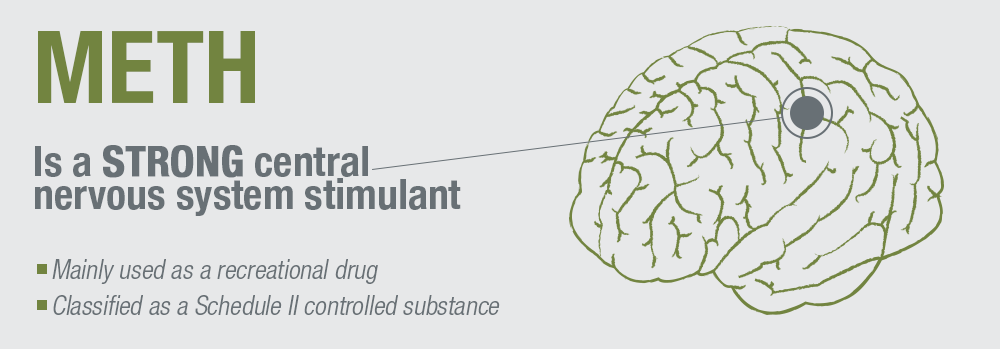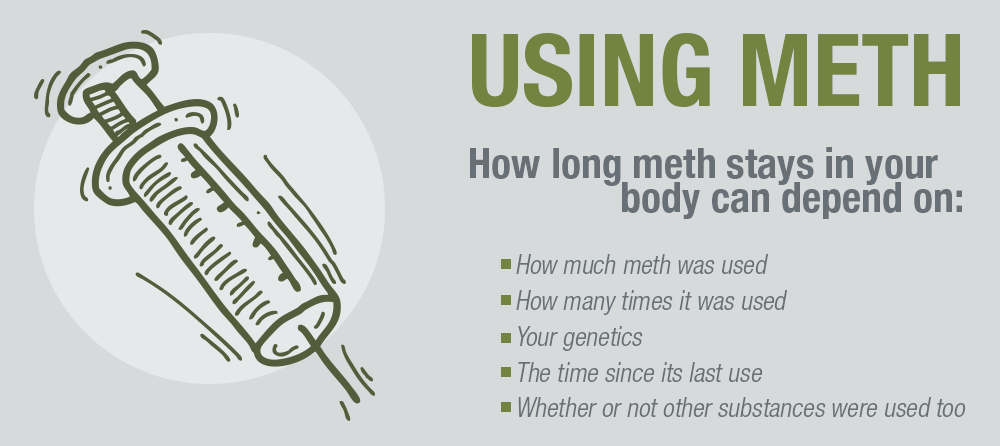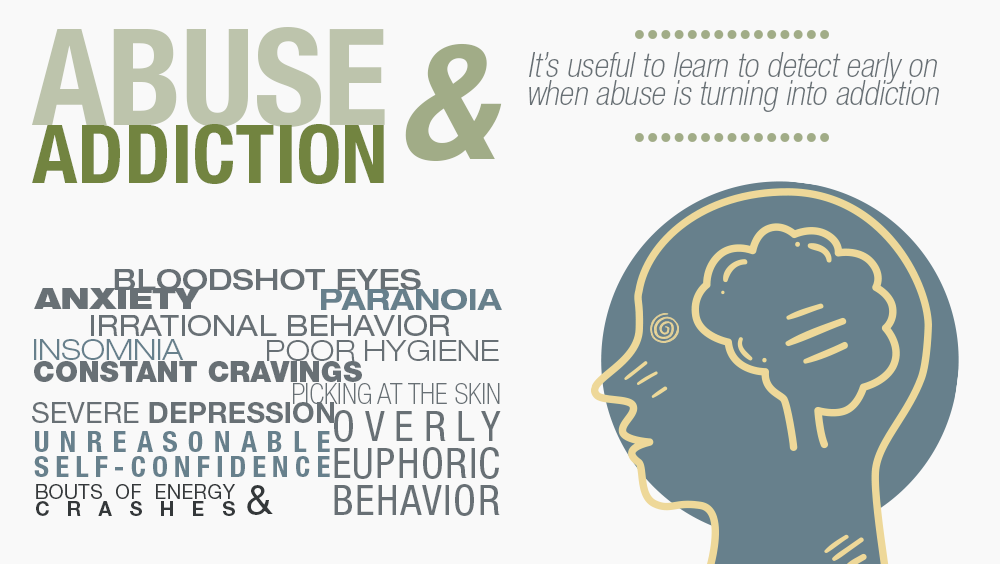Location
Our Washington Location
Our inpatient facility is located in Washington, and will serve Washington state. It will provide a safe & therapeutic environment for both our staff and patients.
- Edmonds
7416 212th St SW,
Edmonds, WA 98026
Perhaps you're a meth addict who is interested in recovery. You’re tired of living your life focused on how to get more of this drug and missing out on family and friends. You want to get back to normal and to enjoy each day. However, you have heard that the withdrawal symptoms are pretty difficult. This is true. Methamphetamine withdrawal is hard to manage, but not as much when you have professional support. Still, you are interested in knowing what you will be encountering when you quit.
In order to understand how long it stays in your system, it helps to understand more about the addiction itself. You should also know what treatment is available and how you can get the help you need. No matter how hopeless you feel, help is available and you can begin recovery with a focus on the future.
Meth is short for methamphetamine, which is a stimulant that is highly addictive. It impacts the central nervous system, which can affect many areas of your body. It’s a white powder that has no odor and can be dissolved in water or even in alcoholic drinks. This drug goes by several names when you’re purchasing it out on the street, including chalk, crystal and ice.

This is a synthetic drug, which means it’s man-made. It came from amphetamine and was originally used in nasal decongestants. Methamphetamine is a Schedule II drug, which means it can only be legally obtained through a prescription which is non-refillable. It’s used to treat attention deficit hyperactivity disorder and has been found in weight-loss treatments. However, it is rarely prescribed by doctors.
Addicts like meth because it is longer-lasting than some other drugs and has a euphoric effect. The person is often more talkative and less inhibited, which is why it’s popular in clubs and parties. It also decreases the appetite and provides a sense of well-being.
Another reason this drug is popular for many addicts and dealers is because it’s easily manufactured. They can buy over-the-counter medications which contain pseudoephedrine. It also takes acetone, anhydrous ammonia, ether, lithium and red phosphorus. These chemicals are easily accessed, which makes it hard for law enforcement agencies to prevent the manufacture. Since it’s so easily made, meth is also more affordable than many other illicit drugs.

Meth can be made into several forms, which allows it to be snorted, injected or smoked. It’s also appealing to first-time users because it can be taken orally. Smoking and injecting the drug result in the fastest results within minutes. It also creates a rush not experienced with other methods of use. This rush is extremely pleasant to the user and increases the likelihood they will use again.
When a person snorts meth, they will feel the rush within about 5 minutes while ingesting it takes about 15 minutes. Both of these options create a high that make the user feel good and less inhibited. They will likely become more talkative and take risks. The person appears to be enjoying life and having fun, which is one reason this drug is used in clubs and at parties.
The initial rush only lasts a few minutes, but a secondary euphoric feeling can last for several hours. Many users will binge on what is called a run. This means they will take the drug multiple times for several days to maintain the high. During this time, they won’t eat or sleep. As soon as the high goes away and the person starts to come down from the drug, they will use again. This run will go on for some time, even for days, before the person finally crashes and sleeps for an extended period.

The major effects are usually experienced for as long as 8 hours. The aftereffects of the drug can be felt for as many as 12 hours.
The length of time that methamphetamine can be found in the body depends on the type of test being done for it. Different tests are chosen for various reasons.
Urine tests are among the most popular types of drug tests, especially for employers who are hiring new applicants as well as for random drug tests of current employees. They are not as invasive as blood tests, and they are fairly easy to perform. For someone who is a meth abuser, the drug can be detected in urine within 4 to 6 hours. It may be able to be found in the urine for as long as 6 days after the last use.
Medical offices and hospitals will often conduct drug tests for certain patients. To do this, they will frequently perform a blood test. This type of test is probably the most accurate test to check for methamphetamine in the blood.
Crystal meth enters the bloodstream right away. For this reason, testing with a blood test is quite accurate. Blood tests will show a positive result for meth for up to 72 hours after the last use. The drawback with this method is it can’t detect drug use longer than this time period, so an addict can abstain for 3 or 4 days and show negative results even though they are using.
Saliva tests aren't performed nearly as often as blood tests or urine tests. However, there are times when using a saliva test is necessary. They are also becoming much more common as technology has made them more accurate. It is also less invasive and time-consuming than other tests.
Much like a blood test, a saliva test can detect the presence of meth fairly quickly. After the last use, the drug can be found in the saliva within five or ten minutes. It is also detectable in saliva for as long as 72 hours. The downside of this type of test is it won’t detect the drug after this time, so a user can avoid using for a few days and get a clean test even though they are using regularly.
Hair tests are probably the least used of all crystal meth drug tests. However, these are effective in the event that drug use needs to be discovered within a certain time frame.
For hair tests, the drug usually isn't detectable until 10 to 14 days after the last use of the drug. A hair test can be positive as long as 90 days after the individual last used the drug. For some drug programs that see patients on an irregular basis, a hair test may be appropriate. It allows them to track any drug use that happened during a few months prior. It may also be requested in a court case involving criminal charges for the person to show the person was using at the time of the criminal activity.
The fact that you're wondering how long meth stays in the system means that you may have a drug addiction. It's important to know if you do or not. One of the best ways that you can do this is to take a meth addiction quiz. This quiz can give you more information about your relationship with this dangerous drug. It will also tell you whether or not you need to consider treatment.

It can also be helpful to take a closer look at the signs of meth abuse and addiction.
If you are participating in drug abuse, you're likely to experience some of the short-term effects. These can include:
To some, these symptoms of abuse can be very appealing. They are the reason people keep coming back to use this drug over and over. At this point, you could probably stop using the drug and go on with your life. Unfortunately, the pleasurable effects often keep people using until they become addicted.
The symptoms of addiction are very dangerous. If you notice any of these, then you might be an addict.
The symptoms of meth addiction include:
Do any of these sound like they might describe you? If they do, you could be addicted to meth. This is something you need to know about yourself. If you're an addict, getting help for your meth addiction is critical. It is not advised for you to stop using on your own.
When you use meth, it sends chemicals to your brain, which releases those euphoric feelings. Over time, your brain comes to depend on that euphoria to feel normal. When it’s not there, the brain sends signals that something is wrong. You experience symptoms of withdrawal, which is your body’s way of saying it needs more of the drug to function. At this point, you have become addicted. Abuse can lead to addiction very quickly, especially if you use regularly or engage in binge using.
If you are a drug abuser, you may not need to go to rehab. However, that doesn't mean that some other form of treatment isn't necessary for you. You need to stop using before it leads to addiction.

There must be a reason why you started using meth. You may have a mental illness, and it helps you feel better, temporarily. Perhaps you have stress in your life, and you use the drug to cope. Either way, counseling can help you understand the reasons behind your abuse. Taking this step now can prevent an addiction from forming later on.
In many cases, people start abusing meth to help them feel more relaxed in crowds or to be more outgoing at parties and with their friends. If they’re shy or awkward in social situations, the effects of the drug can be appealing to help them interact with others.
If you are addicted to meth, there's no doubt that you have a long road ahead of you. Recovering from a drug addiction isn't easy, but that doesn't mean it's not possible. If you're wondering, how long meth stays in the system, then you are most likely thinking about withdrawal. It makes sense to be concerned about withdrawal symptoms. They can certainly make recovering much more difficult.
Even so, recovery is possible in a professional setting. Detox offers you the ability to go through withdrawal symptoms in a safe environment. You'll be surrounded by all the support you need. You'll get help to manage your withdrawal symptoms, and this is something you wouldn't have on your own.
As you can see, withdrawal from meth can be a serious issue. It generally occurs in two phases. The first phase will begin within 24 hours of your last use. It will reach its most intense point within a couple of days before lessening within a week. The second phase can last for up to three weeks.
For many, the psychotic symptoms are the worst. The person may see things that aren’t real and even become delusional. These symptoms can last for several days before subsiding, and they are the reason many people start contemplating suicide.
It’s never safe to try to detox from meth on your own. With these symptoms, you can lose touch with reality and harm yourself or someone else. However, a detox center can help you through the process safely.
You may need medical detox, which can reduce many of the symptoms. With this type of detox, you are given medications that alleviate the worst of the withdrawal so you can handle the rest. Holistic detox is another approach which is gaining popularity. Instead of using medications, nutrition and exercise are used to help the person detox naturally. Exercise can reduce the severity of many of the symptoms while nutrition helps get the body back into a healthy state.
A medical professional will do an assessment and exam to determine what process is right for you with detox. You will be monitored by staff through the entire time so you don’t have to go through it alone. While detoxing from meth isn’t a fun experience, professionals can make it bearable so you can work towards a goal of being drug-free.
Once you complete detox, drug rehab can assist you with the psychological component of addiction. Both steps are vital, and we offer both here at Northpoint Washington.
Treatment is essential for the meth addict because it helps prevent relapse. It’s a dangerous and incorrect assumption that once it has left your system you’re no longer an addict. You will need to deal with your addiction and determine what led to your use. You also need to get the tools to help you avoid it in the future.
With highly addictive drugs like meth, you may need the structure and supervision of an inpatient rehab. With this program, you will stay at a drug treatment center for several days or a few weeks and receive therapy. Most programs offer both individual and group therapy. In individual therapy, you’ll work with a counselor to understand what caused you to start using in the first place.
When you attend group therapy, you’ll find others who were addicted to meth. You may have a different story or background, but you’ll be able to relate to the challenges of addiction. Even though the drug doesn’t stay in your body the entire time of treatment, the cravings won’t disappear overnight. When you get stressed out, upset or feel sad, angry or lonely, you may be tempted to turn to it for that high it provides. Drug treatment teaches you how to handle these emotions and situations in a positive way instead of turning to methamphetamines to make you feel good.
Treatment can last for several weeks, but you can continue aftercare treatment with 12 step programs or counseling. For people with co-occurring disorders, they may need medication and therapy for a long time afterward. Whatever your situation, drug treatment is your path to a new life.
A person is said to have a co-occurring disorder when they have an addiction and a mental health disorder. In many cases, the mental health disorder comes first, followed by addiction. However, it can happen the other way around as well.
Because meth provides such a high and causes the person to be more talkative and animated, it is popular with people who suffer from severe anxiety in social situations. They like the feeling of being confident and outgoing even if it isn’t natural for them. In fact, it entices them to keep using even when they don’t like the negative aspects of the drug. It’s also one of the reasons the drug is used at parties and clubs among young people.
One of the unique features of meth is its ability to cause mental health conditions like paranoia because of the severe side effects of use. It’s important that both conditions are treated for the person to maintain sobriety and stay on the path to recovery.
Studies show that people who have been diagnosed with Attention Deficit Hyperactivity Disorder or ADHD may be at an increased risk for meth abuse. It works similar to the prescription medications given to ADHD patients to control symptoms of the condition. When someone with this condition stops using in treatment, their ADHD symptoms may become more noticeable again.
It’s common for doctors to prescribe a nonstimulant for the ADHD and drug treatment for the addiction. The person may also need to continue treatment with a 12-step program to help them manage their addiction as they continue to be monitored for the ADHD.
It’s important to have both the mental health disorder and addiction diagnosed in a co-occurring disorder. Different treatment options may be necessary to ensure the person doesn’t relapse and can maintain recovery for the rest of their life. Neither diagnosis can be cured most of the time with this situation, but both must be managed to prevent future issues with the addict.
While it affects the nervous system and creates feelings of pleasure in the brain, it has long-term impact in a negative way. It may cause issues with a person’s memory and ability to learn as well as the ability to process information. Some of these symptoms can last for months after use. It also makes treatment more difficult because the person may not have the motivation to try to participate in their own recovery.
A person who is a chronic user is more likely to experience psychotic symptoms which may resemble schizophrenia. It may also lead to more legal issues as the person believes things that aren’t real and acts in odd ways or becomes antagonistic and violent towards others.
What many people don’t realize is that some of these symptoms may last long after meth has been in the body. It takes time for the brain to recover and the natural chemicals and hormones to resume their production. The length of time it will take for someone to appear completely normal will vary based on how long the person was using and how much they used. If they engaged in runs of the drug, it can leave even more severe signs for the long-term.
You may be aware of the high and even the rush that you feel when you use meth. However, you may not realize how it impacts your body for the short- and long-term. It’s important to understand this effect so you can recognize how dangerous this drug is for you.
When you use, it can increase your heart rate as it gives you more energy and increases your metabolism. It can also increase respirations and even your blood pressure. This puts you at risk for cardiac arrest or stroke. You may experience an irregular heartbeat and heat stroke. You may start having tremors and convulsions.
You may become confused and suffer from insomnia even when you aren’t on meth at the time. It causes irritability and makes you become more aggressive. Some of these effects can lead to death even in young, healthy users.
If you continue to use, you can suffer long-term and even permanent damage which can’t be reversed after you stop. Some brain damage can last for several months after you receive treatment. Over time, this drug damages your brain in a way that is similar to people who have been diagnosed with Alzheimer’s disease, epilepsy or stroke.
You may become violent and suffer from psychotic behavior. You will likely have delusions and paranoia along with hearing voices that aren’t there. You’re at an increased risk for suicidal thoughts or even homicidal tendencies. Unlike many other drugs, methamphetamine can alter your appearance to where you’re almost unrecognizable. It damages your teeth and makes your hair look limp and dull and even fall out. A long-term meth user will probably be severely underweight and even suffer from anorexia.
Because it stays in your body for some time, it’s not uncommon for a person to overdose on the drug. It happens most often when you binge use where you continue using for several days without stopping. As soon as you begin to come down from your high, you use more of the drug to avoid the withdrawal symptoms.
One of the unique features of a meth overdose is it doesn’t happen right away. You can take an overdose and not realize you’ve done it. Your body’s systems begin to deteriorate as your blood pressure rises and other changes occur. You begin sweating and your pupils become dilated. Your temperature will rise and your kidneys may fail.
Death follows a heart attack or stroke which was brought on by the drug. It often happens suddenly with no way to get medical help in time for the person who overdosed.
If you’re the parent, sibling or even friend of someone who is abusing meth, you may wonder what you can do to help them see their need for treatment. First, it’s important to understand this drug and how it impacts the system as well as how long meth stays in the body.

Once you have information about addiction, you can talk to your family member or friend. Try to get them to see how their drug use is impacting their life and their health. You may find they aren’t willing to listen or they justify what they’re doing. This response is to be expected with most addicts.
Your next step is to arrange for an intervention. You can work with an intervention specialist who will organize everything so you can sit down and talk to your addicted loved one with other friends and family. With an intervention, your loved one may be able to go to treatment immediately if they agree. You might be surprised to see how much of a difference an intervention can make in getting your loved one to agree to help.

If you or a loved one is using meth and need to get help, you can find resources in your area. Northpoint Washington offers a premiere treatment center with modern features to help you begin the road to recovery.
We provide customized treatment plans that are based on the needs of the individual. Our facility is small with a low patient to staff ratio to ensure you get the help you need. You will experience 24-hour care with supervision to help you with detox and rehab. Here at Northpoint Washington, we offer a holistic approach to treat the entire person and not just the addiction. We provide a nutrition program and exercise opportunities to help you get healthy.
Do you have additional questions about how long meth stays in the system? Would you like to know more about meth treatment? Either way, we're here for you. Please contact us today.

Our admissions coordinators are here to help you get started with treatment the right way. They'll verify your health insurance, help set up travel arrangements, and make sure your transition into treatment is smooth and hassle-free.
888.450.2153Contact Us